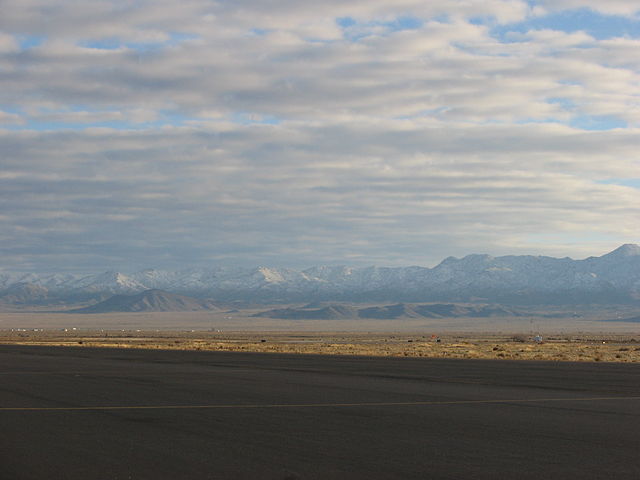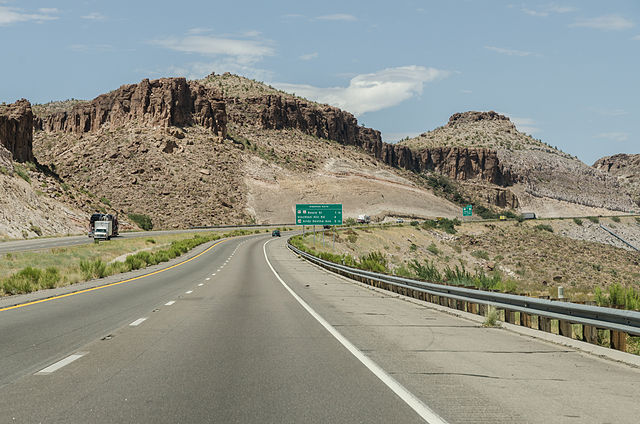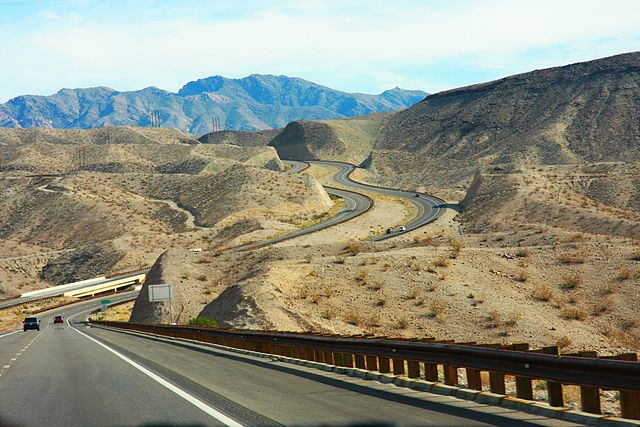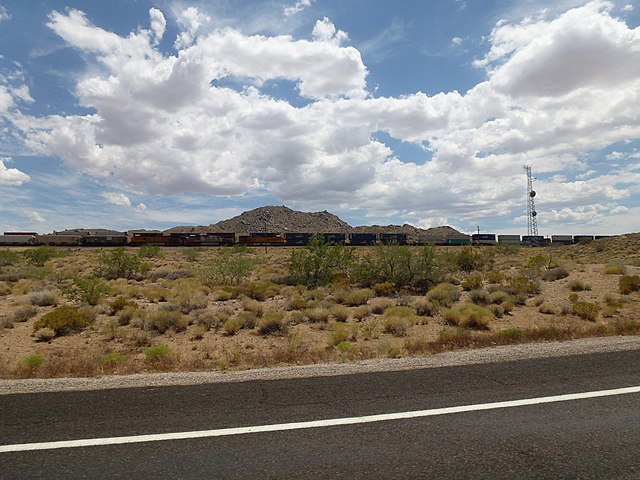Kingman, Arizona sits like a weathered sentinel in the heart of the American Southwest, where the desert meets the mountains in a spectacular dance of climate extremes. Have you ever wondered what makes this historic Route 66 town’s weather so distinctive? The answer lies in its unique position in the high desert, where elevation, geography, and atmospheric patterns create a fascinating meteorological puzzle.
Located in northwestern Arizona, Kingman experiences what meteorologists call a “high desert climate” – a classification that immediately tells you this isn’t your typical desert experience. Unlike the scorching Sonoran Desert that dominates southern Arizona, Kingman’s weather patterns are influenced by its elevation of approximately 3,300 feet above sea level. This elevation creates a buffer against the most extreme heat while still maintaining the characteristic dry conditions that define desert climates.
Geographic Location and Its Impact on Weather
The geographic positioning of Kingman creates a unique microclimate that sets it apart from other Arizona destinations. Nestled in the Hualapai Valley, the city sits at the crossroads of several major geographic features that significantly influence its weather patterns. The nearby Hualapai Mountains to the south and the Cerbat Mountains to the north create natural barriers that affect wind patterns, precipitation, and temperature variations.
This strategic location places Kingman directly in the path of weather systems moving across the western United States. Storm systems from the Pacific Ocean often lose much of their moisture as they cross California’s mountain ranges, arriving in Kingman as weakened but still influential weather makers. Meanwhile, the city occasionally receives moisture from the Gulf of California during the summer monsoon season, creating some of the most dramatic weather displays in the region.
High Desert Climate Classification
Understanding Kingman’s climate classification helps explain why the weather here can surprise visitors expecting typical desert conditions. The high desert climate, scientifically known as a “cold desert” or “temperate desert,” differs significantly from the hot deserts found in lower elevations. This classification means Kingman experiences greater temperature variations between seasons and even between day and night.
The high desert climate brings several distinctive characteristics to Kingman’s weather patterns. Temperature swings of 30-40 degrees Fahrenheit between daily highs and lows are common, especially during spring and fall. This dramatic temperature variation occurs because the thin, dry air at higher elevations cannot retain heat as effectively as the denser air found at lower elevations.
Seasonal Weather Patterns in Kingman

Each season in Kingman brings its own personality, creating a year-round tapestry of weather conditions that keeps residents and visitors on their toes. The seasonal transitions here aren’t gradual affairs – they’re more like nature’s quick-change artist, switching from one costume to another with remarkable speed.
Spring Weather in Kingman (March-May)
Spring in Kingman is like a master painter working with a palette of possibilities. One day might bring gentle warmth and clear skies, while the next could deliver wind storms that remind you of the desert’s raw power. This season represents one of the most unpredictable periods in Kingman’s weather calendar, when the atmosphere seems to be making up its mind about what kind of year it wants to have.
Temperature Ranges and Precipitation
During spring months, Kingman experiences some of its most pleasant weather conditions. Daytime temperatures typically range from the mid-60s to low 80s Fahrenheit, creating perfect conditions for outdoor activities. However, nighttime temperatures can still drop into the 40s or even 30s, especially in March and early April. This significant temperature variation requires visitors and residents to dress in layers and be prepared for rapid weather changes.
Spring precipitation in Kingman is notoriously unpredictable. Some years bring gentle spring rains that awaken the desert landscape, causing wildflowers to bloom in spectacular displays. Other years remain stubbornly dry, with clear skies dominating the season. When spring storms do occur, they can be intense but brief, often accompanied by strong winds that can create dust storms across the valley.
What to Expect During Spring Months
Spring weather in Kingman keeps everyone guessing. You might wake up to frost on your windshield in March, only to find yourself seeking shade by afternoon. The wind becomes a constant companion during this season, sometimes gentle and refreshing, other times fierce enough to make outdoor activities challenging. These winds serve an important purpose, however, helping to clear the air and create the crystal-clear visibility that makes Kingman’s mountain views so spectacular.
Summer Weather in Kingman (June-August)
Summer in Kingman is when the desert really shows its teeth. While the city’s elevation provides some relief from the extreme heat experienced in lower desert areas, temperatures still soar to levels that demand respect and preparation. This is the season when the phrase “it’s a dry heat” becomes both a blessing and a challenge.
Dealing with Extreme Heat
Summer temperatures in Kingman regularly climb into the 90s and can exceed 100 degrees Fahrenheit during heat waves. However, the low humidity levels – often below 20% – mean that the heat feels different from humid climates. Your body’s natural cooling system works more efficiently in dry heat, but dehydration becomes a serious concern. The lack of moisture in the air means sweat evaporates quickly, sometimes before you realize how much fluid you’re losing.
The combination of high temperatures and low humidity creates unique challenges for residents and visitors. Electronics can malfunction, car tires are more prone to blowouts, and even hardy desert plants can struggle during extreme heat events. Air conditioning becomes not just a comfort but a necessity, with many businesses and homes running cooling systems around the clock during peak summer months.
Monsoon Season and Summer Storms
The arrival of monsoon season, typically beginning in July, transforms Kingman’s summer weather pattern dramatically. These aren’t the gentle rains of other climates – monsoon storms are nature’s fireworks display, complete with lightning, thunder, and downpours that can drop an inch of rain in just a few minutes. The moisture typically arrives from the Gulf of California, creating atmospheric instability that leads to spectacular thunderstorm development.
Monsoon storms often form in the afternoon and evening hours, building from seemingly clear skies into towering thunderheads that can reach 50,000 feet in height. These storms bring welcomed relief from the heat but also create new hazards, including flash flooding, dangerous lightning, and sudden wind gusts that can exceed 60 miles per hour.
Fall Weather in Kingman (September-November)
Fall in Kingman is like nature’s reward for surviving the summer heat. This season brings some of the most pleasant weather conditions of the entire year, with comfortable temperatures, clear skies, and gentle breezes that make outdoor activities a joy rather than an endurance test.
Perfect Weather for Outdoor Activities
September through November represents Kingman’s golden season for outdoor enthusiasts. Daytime temperatures settle into the comfortable 70s and 80s, while nighttime lows provide perfect sleeping weather in the 40s and 50s. The monsoon season typically ends by mid-September, leading to extended periods of clear, sunny skies that showcase the region’s natural beauty.
This is the time when Kingman’s location truly shines. The surrounding mountains appear crystal clear against the deep blue sky, and the desert landscape takes on golden hues that photographers and nature lovers find irresistible. Hiking trails that were too hot to enjoy during summer become accessible again, and outdoor events and festivals take advantage of the perfect weather conditions.
Winter Weather in Kingman (December-February)
Winter in Kingman might surprise visitors expecting mild desert temperatures year-round. The high desert climate means cold weather is not only possible but expected, with temperatures that can challenge even longtime residents’ perceptions of Arizona weather.
Cold Temperatures and Occasional Snow
Winter temperatures in Kingman can drop well below freezing, with nighttime lows sometimes reaching the teens or even single digits during cold snaps. Daytime temperatures typically range from the 40s to 60s, but Arctic air masses can keep temperatures below freezing for days at a time. This cold weather requires residents to have heating systems, warm clothing, and winterization strategies typically associated with more northern climates.
Snow is not uncommon in Kingman, with the city receiving measurable snowfall most years. While snowfall amounts are usually modest – typically a few inches at a time – the combination of elevation, cold temperatures, and occasional moisture can create winter wonderland conditions that transform the desert landscape. These snow events often create beautiful contrasts between the white precipitation and the red rock formations of the surrounding mountains.
Monthly Weather Breakdown

Understanding Kingman’s weather patterns month by month helps residents and visitors plan activities and prepare for the unique challenges each period brings. The city’s weather doesn’t follow a simple script – it’s more like an improvised performance where each month brings its own surprises and possibilities.
January Through March: Winter to Spring Transition
The beginning of the year in Kingman often brings the coldest temperatures, with January frequently recording the lowest readings of the year. Frost is common on winter mornings, and heating bills reach their peak as residents battle the desert’s surprising cold. February typically continues the cold pattern but begins to show signs of the approaching spring with slightly warmer afternoon temperatures.
March represents the beginning of Kingman’s transition season, when weather patterns become increasingly unpredictable. One week might bring snow flurries and freezing temperatures, while the next could see shirt-sleeve weather and the first hints of spring warmth. This month often experiences the year’s most dramatic temperature swings, with differences of 40-50 degrees between morning lows and afternoon highs.
April Through June: Spring to Summer Heat
April in Kingman is often considered one of the most pleasant months, with comfortable temperatures and the possibility of spring wildflower blooms following winter precipitation. However, this month also marks the beginning of the windy season, with afternoon breezes that can quickly become dust-stirring gusts.
May represents the last month of truly comfortable weather before summer heat arrives. Temperatures begin climbing toward the 80s and 90s, but humidity remains low, making outdoor activities still enjoyable. June marks the official beginning of summer heat, with temperatures regularly exceeding 90 degrees and the first hints of the approaching monsoon season visible in afternoon cloud buildups.
July Through September: Peak Summer and Monsoons
July and August represent Kingman’s hottest months, with temperatures regularly exceeding 95 degrees and occasional readings above 100. However, these months also bring the excitement of monsoon season, with dramatic afternoon thunderstorms that can drop temperatures by 20-30 degrees in just minutes.
September typically marks the end of monsoon season and the beginning of the transition toward fall. While daytime temperatures remain hot, nighttime cooling becomes more pronounced, and the humidity begins to drop as the monsoon moisture retreats southward.
October Through December: Fall to Winter Cool-Down
October in Kingman is often spectacular, with warm days, cool nights, and crystal-clear skies that make the surrounding mountains appear close enough to touch. This month frequently provides the year’s most perfect weather conditions, with temperatures ideal for any outdoor activity.
November continues the pleasant fall pattern but begins showing signs of approaching winter. Morning temperatures drop into the 40s and 30s, while afternoon highs settle into the comfortable 60s and 70s. December marks the return of winter conditions, with the possibility of frost, snow, and the cold temperatures that define Kingman’s winter season.
Extreme Weather Events in Kingman

Living in the high desert means preparing for weather events that can range from merely inconvenient to genuinely dangerous. Kingman’s location and climate create conditions that can produce some of the Southwest’s most dramatic weather phenomena.
Dust Storms and Haboobs
Dust storms, locally known as haboobs when they reach massive proportions, represent one of Kingman’s most visually spectacular and potentially dangerous weather events. These storms form when strong winds pick up loose soil and sand, creating walls of dust that can reach thousands of feet in height and extend for miles across the landscape.
The conditions that create dust storms are common in Kingman’s climate – loose, dry soil combined with strong winds and atmospheric instability. Spring months are particularly prone to dust storm activity, as winter rains may have settled dust, but spring winds and warming temperatures create ideal conditions for soil to become airborne.
When a major dust storm approaches Kingman, the sight is both terrifying and awe-inspiring. The approaching wall of dust can blot out the sun, reduce visibility to just a few feet, and create driving conditions that are extremely hazardous. These storms can last from a few minutes to several hours, depending on the atmospheric conditions that created them.
Flash Floods and Monsoon Dangers
Despite Kingman’s desert location, flash flooding represents a serious weather hazard during monsoon season. The combination of intense rainfall, hard-packed desert soil, and the area’s natural drainage patterns can create dangerous flooding conditions with little warning.
Desert soil, baked hard by months of heat and sun, cannot absorb water quickly when intense rains arrive. Instead, the water runs off the surface, collecting in washes, arroyos, and low-lying areas. What might be a dry creek bed in the morning can become a raging torrent within minutes during a monsoon storm.
Best Times to Visit Kingman Based on Weather
Choosing the right time to visit Kingman depends largely on your tolerance for heat, cold, and your planned activities. The city’s dramatic seasonal variations mean that timing can make the difference between a comfortable, enjoyable visit and a weather-related challenge.
Fall months, particularly October and November, offer the most consistently pleasant weather conditions. Temperatures are comfortable for outdoor activities, precipitation is minimal, and the clear skies provide excellent visibility for sightseeing and photography. This period represents peak tourist season for good reason – the weather is nearly perfect for exploring everything Kingman and the surrounding area have to offer.
Spring months, especially April and May, also provide excellent visiting conditions, though with more weather variability. The possibility of spring wildflower blooms adds an extra dimension to the desert landscape, but visitors should be prepared for temperature swings and occasional wind storms.
Summer visits require careful planning and heat awareness but offer the unique experience of monsoon season storms. If you can handle the heat and plan activities for early morning or evening hours, summer can provide dramatic skies and spectacular lightning displays that are unforgettable.
Winter visits appeal to those seeking cooler temperatures and the possibility of snow-dusted desert landscapes. While cold weather gear is necessary, winter offers clear skies, comfortable hiking conditions during warm afternoons, and the unique experience of a desert winter.
Weather-Related Activities and Attractions
Kingman’s diverse weather patterns create opportunities for different activities throughout the year. The key to enjoying the city’s offerings lies in matching your activities to the current weather conditions and seasonal patterns.
During the pleasant fall and spring months, outdoor activities take center stage. Hiking trails in the nearby Hualapai Mountains become accessible, and the historic Route 66 attractions are comfortable to explore. The clear skies during these periods make Kingman an excellent base for stargazing, with minimal light pollution and exceptional atmospheric clarity.
Summer’s extreme heat shifts activities to early morning or evening hours, but it also brings the excitement of monsoon season. Storm watching becomes a popular activity, with photographers and weather enthusiasts gathering to capture the dramatic lightning displays and towering thunderheads.
Winter’s cold temperatures and occasional snow create unique opportunities for desert winter activities. While snow may limit some outdoor pursuits, it also creates photographic opportunities that showcase the desert’s unexpected beauty under a blanket of white.
Tips for Dealing with Kingman’s Weather
Successfully navigating Kingman’s weather extremes requires preparation, awareness, and respect for the desert environment’s power. Whether you’re a resident or visitor, understanding how to prepare for and respond to different weather conditions can make the difference between comfort and crisis.
Summer Heat Safety
Surviving and thriving in Kingman’s summer heat requires both preparation and common sense. Hydration becomes critical – the dry air means you may not realize how much fluid you’re losing through perspiration. Carrying water wherever you go isn’t just recommended; it’s essential for safety.
Timing activities for early morning or evening hours helps avoid the day’s peak heat. The desert’s low humidity means temperatures can drop significantly once the sun sets, making evening activities much more comfortable than afternoon efforts.
Vehicle preparation is crucial during summer months. Checking tire pressure, ensuring cooling systems are functioning properly, and carrying emergency supplies can prevent dangerous situations if your vehicle breaks down in extreme heat.
Winter Weather Preparation
Kingman’s winter weather can catch unprepared visitors and even longtime residents off guard. The high desert’s cold temperatures require heating systems, warm clothing, and winterization strategies typically associated with much more northern climates.
Protecting pipes from freezing becomes a concern during cold snaps, and having backup heating sources can be essential if power outages occur during winter storms. Snow and ice on roads, while infrequent, can create hazardous driving conditions for those not accustomed to winter driving.
Climate Change and Future Weather Trends
Like many areas in the American Southwest, Kingman is experiencing the effects of changing climate patterns. Temperature records suggest a warming trend over recent decades, with both average temperatures and extreme heat events showing increases.
Precipitation patterns are also showing signs of change, with some models suggesting that monsoon seasons may become more intense but potentially shorter in duration. These changes could affect everything from water resources to wildfire risk in the surrounding areas.
Understanding these trends helps residents and visitors prepare for a future that may include more extreme weather events and shifting seasonal patterns. Climate adaptation strategies are becoming increasingly important for communities like Kingman that exist in the challenging environment of the high desert.
Conclusion
Kingman’s weather represents one of nature’s most fascinating studies in contrasts and extremes. From the surprise of winter snow to the drama of summer monsoons, from the perfect comfort of fall days to the unpredictable nature of spring storms, this high desert city offers a climate experience unlike anywhere else in Arizona.
The key to enjoying Kingman’s weather lies in understanding its patterns, preparing for its extremes, and respecting its power. Whether you’re planning a visit or considering making Kingman your home, knowledge of the local weather patterns will help you make the most of what this unique desert climate has to offer.
The city’s weather may be challenging at times, but it’s also part of what makes Kingman special. The dramatic temperature swings, the spectacular storm displays, and the crystal-clear skies all contribute to a living environment that keeps residents and visitors engaged with the natural world in ways that more moderate climates simply cannot match.
Frequently Asked Questions
1. What is the hottest month in Kingman, Arizona?
July and August are typically the hottest months in Kingman, with temperatures regularly exceeding 95°F and occasionally reaching above 100°F. However, the low humidity levels make the heat more bearable than in humid climates, and monsoon storms can provide temporary relief.
2. Does it snow in Kingman, Arizona?
Yes, Kingman receives measurable snowfall most years due to its elevation of 3,300 feet. While snowfall amounts are usually modest (typically a few inches at a time), winter temperatures can drop below freezing, and snow events create beautiful desert winter landscapes.
3. When is monsoon season in Kingman?
Monsoon season in Kingman typically runs from July through mid-September, with peak activity in July and August. These storms bring dramatic afternoon and evening thunderstorms with intense rainfall, lightning, and strong winds, providing relief from summer heat but also creating flash flood dangers.
4. What’s the best time to visit Kingman weather-wise?
October and November offer the most consistently pleasant weather, with comfortable temperatures (70s-80s during the day, 40s-50s at night) and minimal precipitation. April and May also provide excellent conditions but with more weather variability and occasional wind storms.
5. How much does the temperature vary between day and night in Kingman?
Kingman experiences significant diurnal temperature variations, especially during spring and fall, with differences of 30-40 degrees Fahrenheit between daily highs and lows being common. This occurs because the thin, dry air at higher elevations cannot retain heat as effectively as denser air at lower elevations.

